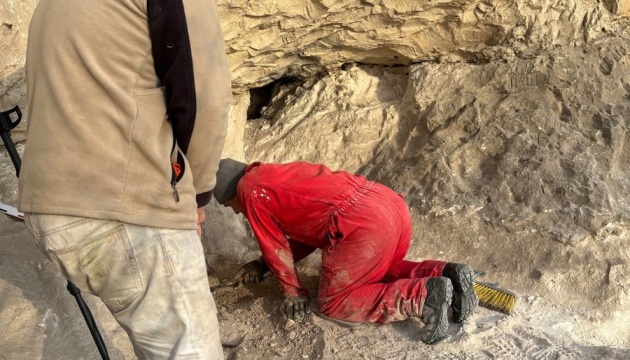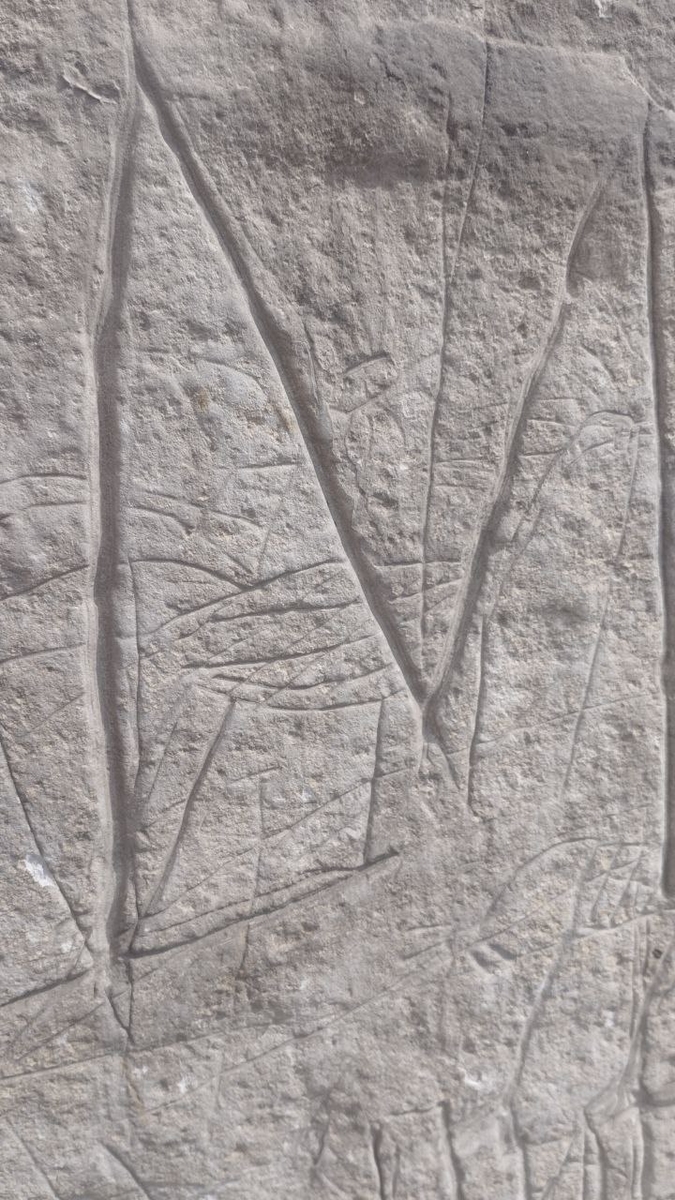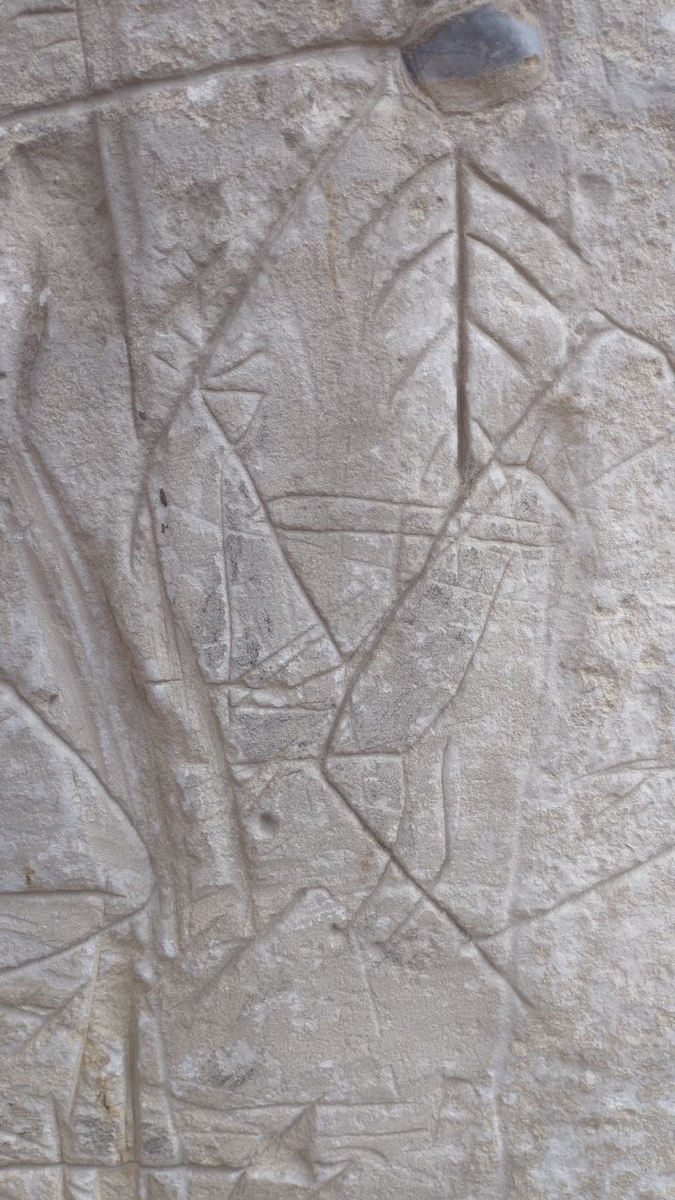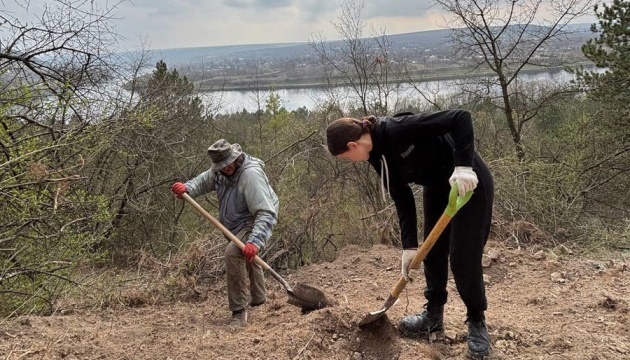Archaeologists are conducting research on an 11th–17th-century rock monastery in the village of Oksanivka, Vinnytsia region, a cultural heritage site of local significance.
Senior researcher Pavlo Nechytailo from the Scientific Research Center “Protective Archaeological Service of Ukraine” shared details with Ukrinform about the ongoing study.

“The goal of our research on the rock-cave complex in Oksanivka is to monitor the state of rock carvings and rooms, compare their condition with 2013 data, and examine the slope beneath the caves and remaining structures to identify cultural layers and artifacts linked to the man-made rooms and engravings. One of our key tasks is additional photo documentation and topographic surveys of specific objects in preparation for a monograph-photo album dedicated to the Oksanivka rock-cave complex,” Nechytailo said.
According to him, the study revealed that the area beneath the hard-to-reach caves, once used as monks’ dwellings and cells, was significantly altered in the 1970s–early 1980s. During this period, the slope was artificially terraced, Crimean pines were planted, and large-scale landscape modifications were carried out — possibly in connection with the construction of a hydroelectric power plant cascade on the Dniester River. The archaeologist suggests that during this time, the cultural layer associated with the monks’ cells may have been destroyed.
One of the key discoveries relates to Complex No. 1, which preserved rock carvings and a cave church. According to researchers, this area was likely used solely for prayer and communal worship.
Test excavations beneath the caves and remains of rock structures revealed undisturbed and authentic soil layers. Among the findings were two 17th-century bullets flattened against the rock, suggesting that monks were fired upon at some point in history.

Nechytailo said that the first complex of the rock monastery is highly unique, as it still contains 11 room remains, with walls carved to heights of two to six meters. He suggests that this feature was designed to strengthen the structures and prevent collapses, an approach not observed in other known Dniester rock-cave complexes.
“This peculiarity is due to the brittle nature of Oksanivka’s rock formations. Below the cave church, we discovered a forged hook, which was likely used to hang a wooden door at the church’s entrance,” he added.

According to Myroslava Marchenko, head of NGO Tourist Yampil Community, local authorities have expressed support for the archaeological initiative. Funding for the research was provided by a Kyiv-based philanthropist.
“To preserve this heritage, we plan to transfer it under the protection of the Busha State Historical and Cultural Reserve or establish an Oksanivka branch of the reserve. This would allow for the creation of a tourist center and a souvenir shop. We already have tour guides, including an English-speaking expert who can provide insights into Oksanivka. We are committed to continuing this work, as Ukraine is now actively rediscovering its cultural identity,” Marchenko said.
After completing the research in Oksanivka, the archaeological team will move to the village of Sloboda-Pidlisivska in the Yampil community, where additional ancient caves are located.
The Oksanivka caves, located in cliffs along the left bank of the Dniester River, were first documented in the late 19th century. Over time, researchers have uncovered petroglyphs from various periods — ranging from the Bronze Age to the Late Middle Ages — as well as megalithic structures and Paleolithic artifacts.
In the early 2000s, scholars identified remains of a 17th-century cave church, suggesting that the site once functioned as a fortified monastery.
This remarkable monument of religious and defensive rock architecture includes 27 carved chambers within a 47-meter-thick chalk formation. Its walls — both inside and outside — feature dozens of rock carvings, made either by engraving or painting. The predominant motifs include crosses, geometric figures, horsemen, zoomorphic shapes, a ship, and various inscriptions.
The rock carvings of Oksanivka remain unparalleled in Ukraine.
Source: Archaeologists explore rock monastery in Vinnytsia region




